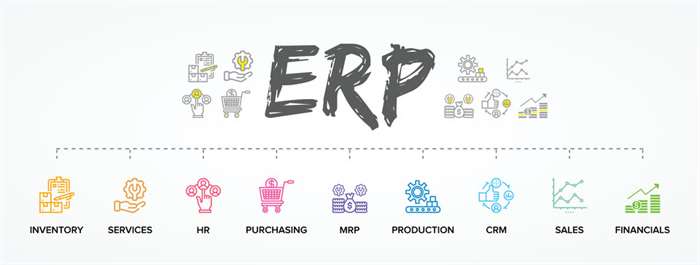Content
Requirement analysis is an element of project management that helps ensure clarity, completeness, and relevance. The requirements may apply to software development, process improvement, or a new technology purchase. BPMN is based on a flowchart technique like activity diagrams from Unified Modeling Language . It uses a unique standard of notation to create graphs including flow objects, connecting objects, swim lanes, and artifacts. These help simplify understanding of the business process answering questions regarding who performs the activities and the data elements required to do so. During this step of the requirements analysis process — also called needs andrequirements gathering— teams work with the stakeholders to identify the latter’s needs and requirements.

Small increments for getting feedback more frequently, rather than having more detailed up-front requirement specification as in Use Cases. It only summarizes some of the relationships between use cases, actors, and systems. Success depends on the skills of those performing the analysis, and while gaps may be revealed, their true causes may remain undiscovered. It provides a realistic view of how long the project will take and what resources are needed at various points in development. There are a variety of UML diagrams to choose from, like use case, sequence, interaction, class, and more. These diagrams do not provide detail on how objects behave or collaborate.
IDEF (Integrated Definition for Function Modeling)
Business process modeling notation helps visually document the elements of a business process. The team maps out the current state as a baseline and determines the future desired state. By viewing https://globalcloudteam.com/ the business process, businesses can make improvement decisions. The purpose of requirements analysis is to collect the information necessary to design a product to meet the needs of stakeholders.
- This technique requires an understanding of roles and responsibilities.
- In UML, graphical notations are used to represent the design of a software project.
- Get them in writing and have the document signed by key stakeholder groups affirming that the presented requirements accurately reflect their needs.
- Documenting dependencies and interrelationships among requirements, as well as any assumptions and congregations.
- Moreover, reworking on the project and fixing the errors could further add to the project cost and time.
- A variety of requirement analysis techniques are available, including Business Process Modeling Notation , Gantt charts, flowcharts, and gap analysis.
Use a post-mortem template to document the results of your project. After gathering all of the requirement data, analysis, and modeling, a review will occur. The best requirements are well-documented, measurable, and clear, and they help identify improvement opportunities. Unified Modeling Language is an object-oriented modeling language primarily used in software engineering to visualize system design. In this article, you’ll find expert tips for performing requirement analysis, a requirement analysis template with guiding data, and a practical approach to understanding requirement analysis techniques. So this is how we have to look at each and every requirement at appropriate level.
Organizing Options for the Project Management Office (PMO)
Or perhaps it is a network based on a particular vendor’s equipment, again often one that the designer feels comfortable with. Another obvious example is a project that has a budget constraint or deadline that forces the designer to make do and use familiar, easy-to-apply technologies. Problems with such choices are that they are not objective and that familiar technologies or vendors may not be the right choices for that particular network. Provides you with the means for analyzing your network and the environment in which it is contained. You learned about gathering and managing user, application, device, and network requirements.
Requirements analysis involves a combination of hardware, software, expertise in engineering as well as excellent people skills. Project managers carry out project requirements analysis before beginning new projects. The requirement analysis document collects, organizes, and tracks the project requirements from key stakeholders. It guides project planning and ensures you complete your projects aligned with stakeholder and business goals. Both physical and logical data flow diagrams are useful in process modeling because they provide different perspectives on the flow of data in a system. PDFDs give a clear picture of the physical path that data takes, while LDFDs show the logic behind the processing of the data.
Common Management Mistakes (and How You Can Avoid Them)
Designed to be understood by all business stakeholders yet represent complex process semantics. Complex processes result in overcomplicated and confusing diagrams. They can be time-consuming to create, particularly for complex software applications. Complex processes result in dense flowcharts that can be difficult to understand. Change management is time consuming, as flowcharts need to be redrawn to accommodate process alterations. The five-step process below is vital in discovering a project’s requirements.

I measure that with the requirements we collect and document the gaps. Then we identify a use case based on the content diagram and identify further gaps,” she explains. “Therefore, it is critical to have the correct stakeholders involved during this period to identify the customer’s needs, understand the feasibility, and evaluate the technical conditions to support the implementation. Lastly, the requirements help cultivate the acceptance criteria,” White notes.
Prepare requirements packages
Use cases specify the expected behaviour , and not the exact method of making it happen . Use cases once specified can be denoted both textual and visual representation . A key concept of use case modeling is that it helps us design a system from end user’s perspective. It is an effective technique for communicating system behavior in the user’s terms by specifying all externally visible system behavior.
Create a concise yet comprehensive requirements document and share it with the customer. In this database, the student will be an entity with attributes like address, name, id, age, etc. The address requirement phase can be another entity with attributes like city, street name, pin code, etc and there will be a relationship between them. Somewhere round edge rectangles are also used to represent process.
Things to consider when designing Information Systems
Since requirements define deliverables and build consensus, it essential that all key stakeholders are involved in the requirements process as needed, whether that involvement includes identification, review or approval. Has any of your clients ever complained that what you delivered him isn’t what he exactly ordered? Have you faced trouble with conflicting requirements from multiple customers? A focused and comprehensive business requirements analysis can help you get rid of bottlenecks such as these. Data flow diagram is a simple formalism to represent the flow of data in the system. It is an elegant technique that is useful to represent the results of structured analysis of software problem as well as to represent the flow of documents in an organization.


